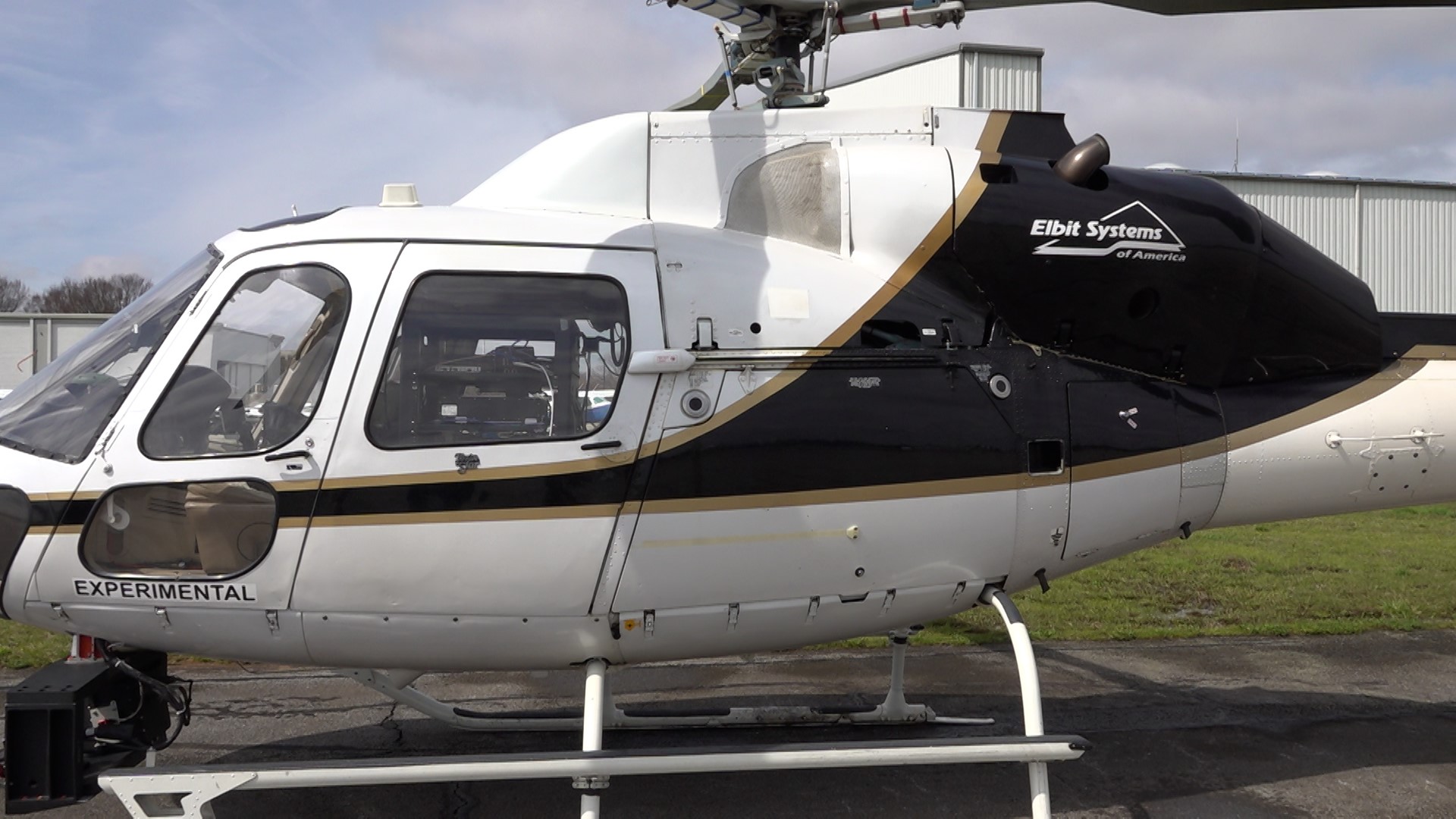HUNTSVILLE, Ala. — When you're miles off the ground, the world around you can start to look a little different.
Eric “Delta” Burke, Senior Business Director of Vertical Lift Business Development for Elbit America says, "helicopters, obviously [are] very dangerous. They fly low constantly. They have a lot of obstacles in terrain that they need to be aware of."
Elbit America is a $1.5B company, based in Fort Worth, TX. They produce innovative solutions that protect and save lives, many of which directly supports our nation’s warfighters.
"We're here for the warfighter...we are a DOD industry partner just over 30 years. So, we do everything from helmet mounted displays, which you've seen today. We have a system that brings the same technology to tanks. We do unmanned systems as well. So, we're a very well-rounded organization for the Department of Defense," Burke said.
Elbit may have a diverse product line, but their main product focuses on helmet mounted displays that are used largely by the Armed Services’ pilots operating advanced aircraft such as the Apache AH-64 helicopter and the F-35 joint strike fighter, which helps alleviate the low situational awareness.
"Before we had all of these different technologies and capabilities, we would really get overloaded easy, right," Burke shares. "I'd be heads down reading a paper map, trying to make sure that we're flying in the correct direction, make sure we're not hidden wires or things that could injure or kill the air crew."
With Elbit's innovative technology, low situational awareness is a thing of the past. "Now I could put that map away, look up and do the same thing while looking out for other aircraft that may be in the area," Burke said.
One of their newest innovative technologies and demonstrations was on the X-Sight helmet.
"We're flying the X-Sight helmet. It's a full face, monocular helmet. It's approximately 60 degrees wide by 30 degrees high. It's going to put an image on the visor," Burke said.
The X-Sight visor is detachable and mounts on standard military helmets used by current helicopter pilots and that image presented on the visor, through symbols made by augmented reality, "..will develop a scene where all the trees, power lines, wires, buildings, those things come into play, via the sensor package that's on the aircraft, and it gets depicted right in front of him. So he knows if he's about to hit something and there's a tactical awareness to it as well," Burke said.
Other features allow the pilot to see possible landing zones, whether it's near or far along with night-vision capabilities.
"You could also see where other air crew members are looking at through symbology. So if they're trying to tell you of a particular hazard or somewhere where you need to go, all you need to do is look inside your visor and you know exactly where he's talking about."
Burke says this new technology is geared towards, "the entire 47 community, the Blackhawk community, Apaches, all of the Army aviators."
Huntsville being one of their biggest customers, "Huntsville Center of Army Aviation Excellence…they're going to be able to test the equipment out, make sure it's safe," Burke said.
This project, 13 Years in the making, may hit the fleet operationally in 2028.

